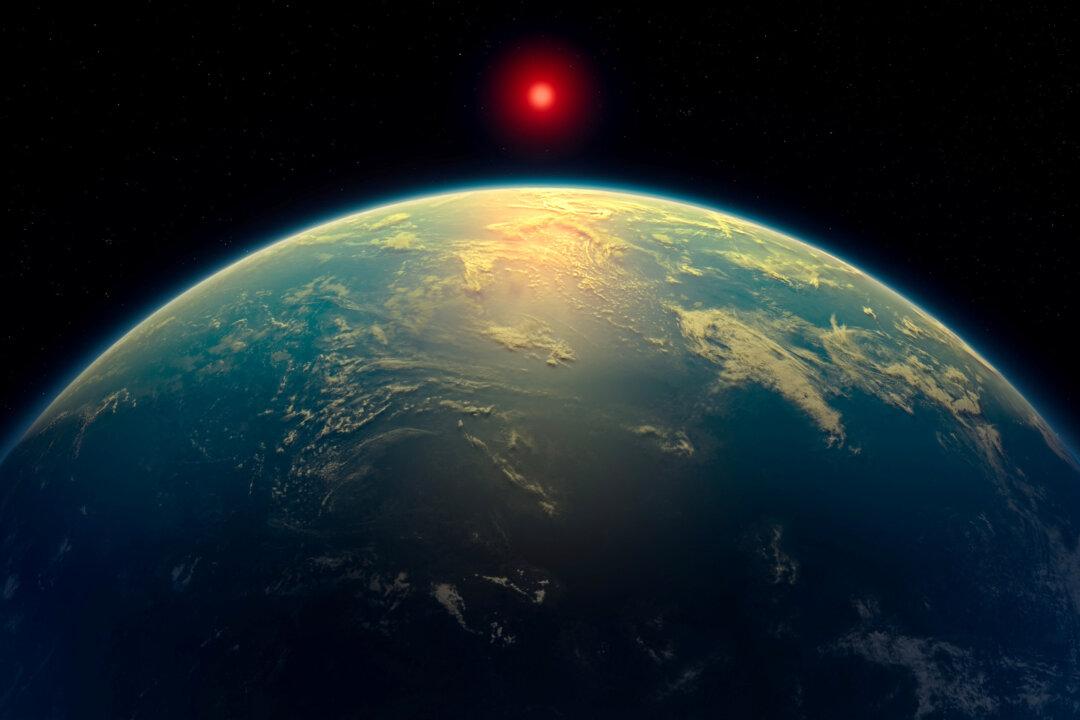Scientists may have found what they call the strongest signs yet of possible life on a remote planet 2.6 times the size of Earth.
Using NASA’s James Webb Space Telescope (JWST), scientists at the University of Cambridge’s Institute of Astronomy have detected two gases in the planet’s atmosphere that, on Earth, are produced only by living organisms, primarily microbial life such as marine phytoplankton, a type of microscopic algae.
The abundant presence of the two gases—dimethyl sulfide (DMS) and dimethyl disulfide (DMDS)—suggests that planet K2-18b may be teeming with microbial life, the researchers said.
The discovery of the two gases is a strong indicator that biological processes could be present on the ocean-covered planet, but does not by itself constitute proof of life. Still, the researchers were excited by their discovery.
These observations suggest that K2-18b is a hycean planet—a world with a vast ocean and a hydrogen-rich atmosphere.
“The only scenario that currently explains all the data obtained so far from JWST, including the past and present observations, is one where K2-18 b is a hycean world teeming with life,” Madhusudhan said.
Orbiting a red dwarf star smaller and less luminous than our sun, K2-18b is located in the constellation Leo, about 124 light-years from Earth, or 730 trillion miles. As such, the amount of light reflected from the planet and reaching us is extremely small.
Once the available observations are confirmed, the discovery may bring scientists a step closer to finding life on other planets.
“We are talking about microbial life, possibly like what we see in the Earth’s oceans,” Madhusudhan said.
When asked about possible multicellular organisms or even intelligent life, Madhusudhan said: “We won’t be able to answer this question at this stage. The baseline assumption is of simple microbial life.”

More Work to Do
The JWST observations support a 99.7 percent certainty that the two molecules are present, meaning that there is a 0.3 percent chance that the observations are the result of a statistical fluke.But scientists say what is truly remarkable is the exceptionally high concentration of these gases, more than 10 parts per million by volume.
“This is thousands of times higher than their concentrations in the Earth’s atmosphere, and cannot be explained without biological activity based on existing knowledge,” Madhusudhan said.
“However, we need to be open and continue exploring other scenarios.”
Next on the agenda is to repeat the observations several times to reduce the chance that the observations are the result of a statistical fluke to 0.0001 percent, or one in a million, Madhusudhan said.
After that, more theoretical and experimental studies will need to be done to determine whether or not DMS or DMDS could be produced by an as yet unknown abiotic mechanism—one not involving biological processes—in K2-18b’s atmosphere.
“We need to remain open and pursue other possibilities,” Madhusudhan said.
“The rich data from K2-18 b make it a tantalizing world,” said Christopher Glein, principal scientist at the Space Science Division of the Southwest Research Institute in Texas.
“These latest data are a valuable contribution to our understanding. Yet, we must be very careful to test the data as thoroughly as possible. I look forward to seeing additional, independent work on the data analysis starting as soon as next week.”
Although Madhusudhan said that finding life is the “Holy Grail” of exoplanetary research, he emphasized that the findings do not conclusively show that the two gases are produced by life.
“[It is in] no one’s interest to claim prematurely that we have detected life,” he said.







